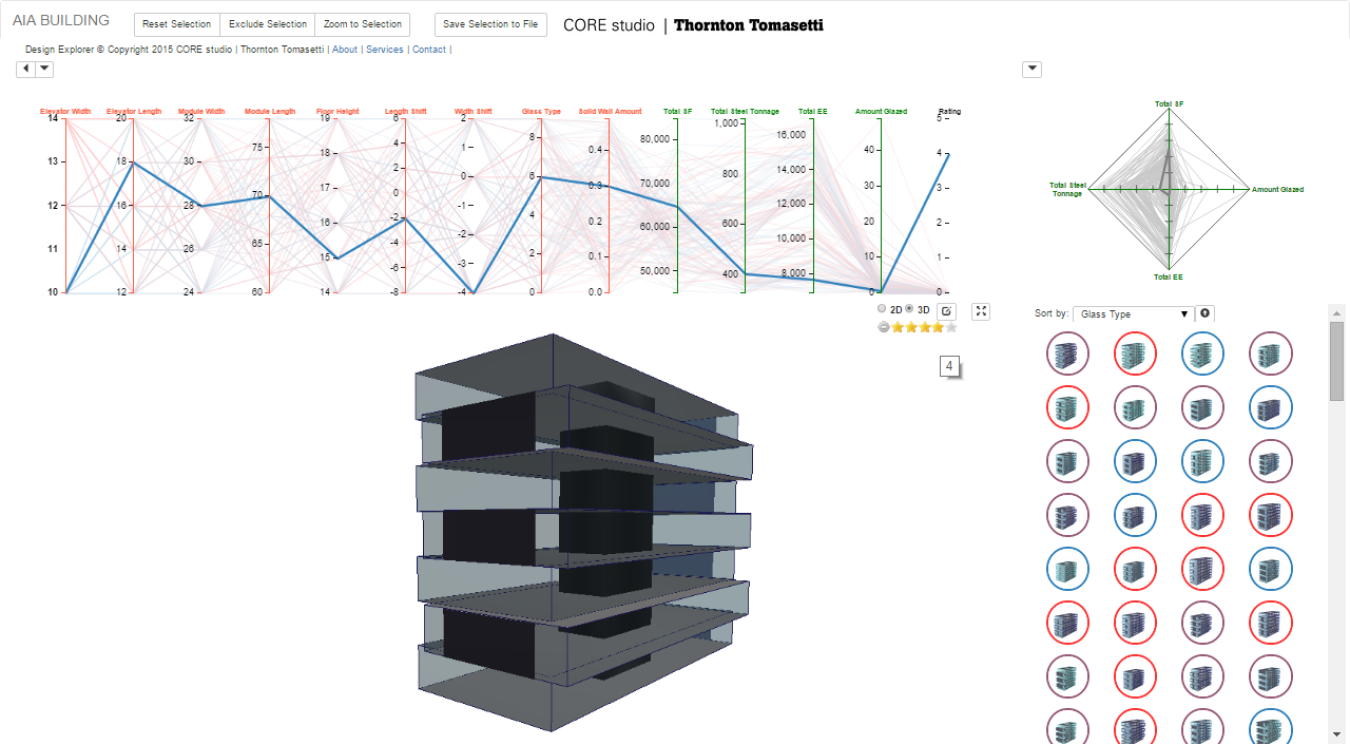Later this week, on September 25-27, Thornton Tomasetti’s CORE Studio will be hosting the third AEC Technology Symposium and Hackathon in New York. The event brings together software developers that work in and around the architecture, engineering, and construction (AEC) industries to learn about the latest technologies and to use them to prototype new products in a 30-hour caffeine-fueled grand finale.
BTO is sponsoring the hackathon portion of the event, as it did in 2014. And with the anniversary of the 2014 hackathon approaching, it’s time to visit one of the systems that was developed at that event. vA3C is an open-source browser-based 3D viewer for AEC models. vA3C stands for “visualize AEC” with E replaced by 3 as is often done in “hacker” projects. vA3C accepts files in a JSON format and publishes them using the three.js library for interactive 3D graphics. The published models can be panned, rotated, orbited and zoomed.
A vA3C viewer instance was hosted at https://va3c.github.io/viewer/. Source code is also available so that developers can embed a copy of the viewer in any application and customize its functionality. In addition to developing the viewer itself, the vA3C team has also developed plug-ins that allow applications to export the vA3C format. Plug-ins are already available for Revit and Grasshopper.
Developers are also leveraging the vA3C core in derivative products. “Since the hackathon CORE studio has been working on a fork of vA3C named Spectacles,” says Mostapha Roudsari of CORE Studio, and one of the organizers of the hackathon. “We combined Spectacles with Pollination, another 2014 hackathon project to create Design Explorer, an interactive interface for exploring multidimensional design spaces. This wouldn’t be possible without vA3C.”
DOE’s OpenStudio team has also leveraged vA3C with two new “measures”—scripts that operate on OpenStudio models. The view_model measure displays a model using time independent data like space type, surface type, surface boundary condition, or zone. The view_data measure exports the model overlaid with time series simulation results which allows models to be “played” like movies. The measures are available on the building component library. Dan Macumber of NREL developed the measures and he credits Theo Armour, one of the vA3C viewer developers, with helping to bridge the gap between vA3C and applications like OpenStudio. “It was really cool to see this project spring up and become so useful almost overnight, Theo and the vA3C team did a great job!”
What will be this year’s vA3C? What great new product will emerge from this week’s hackathon? Check back next September to find out!

Thornton Tomasetti’s CORE Studio used vA3C and Pollination (another hackathon product), to develop the multidimensional design space exploration tool Design Explorer.

